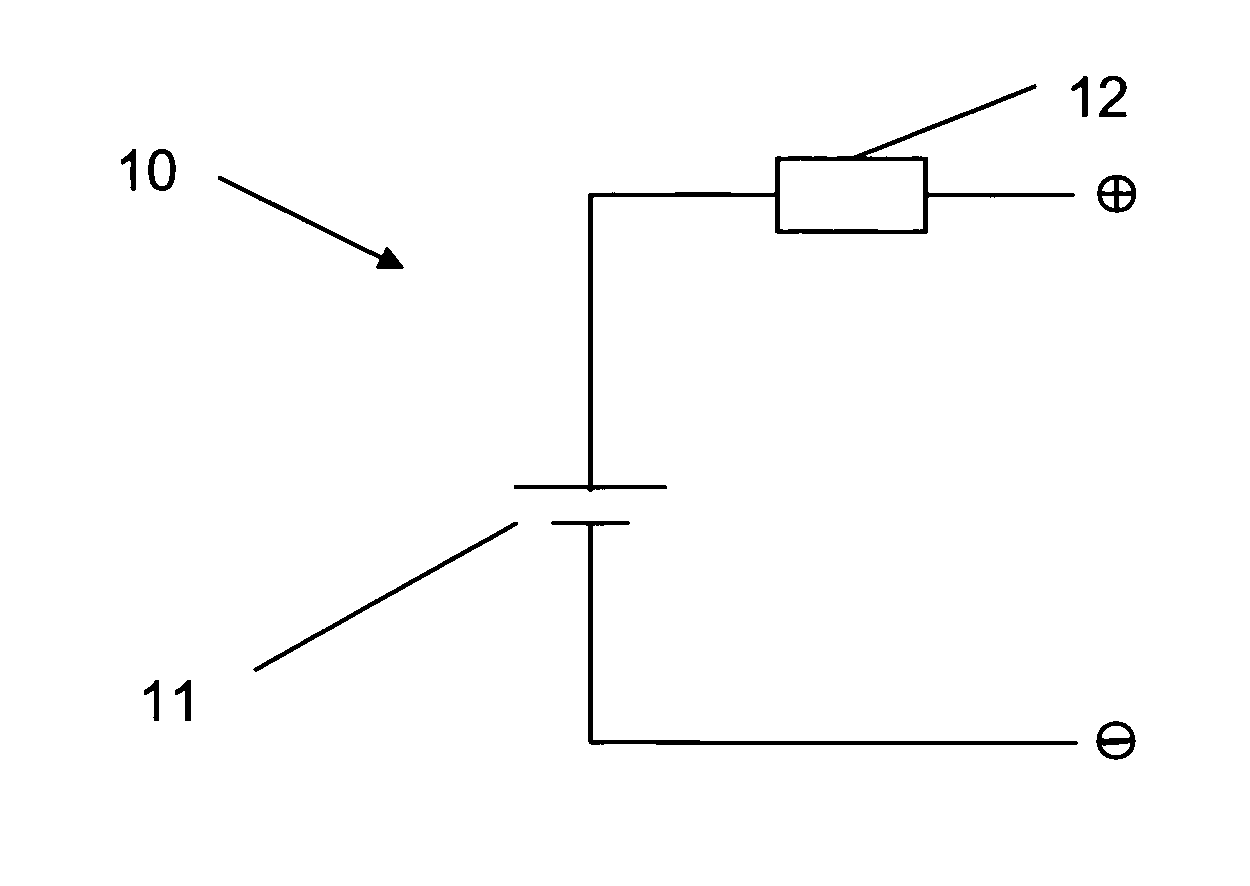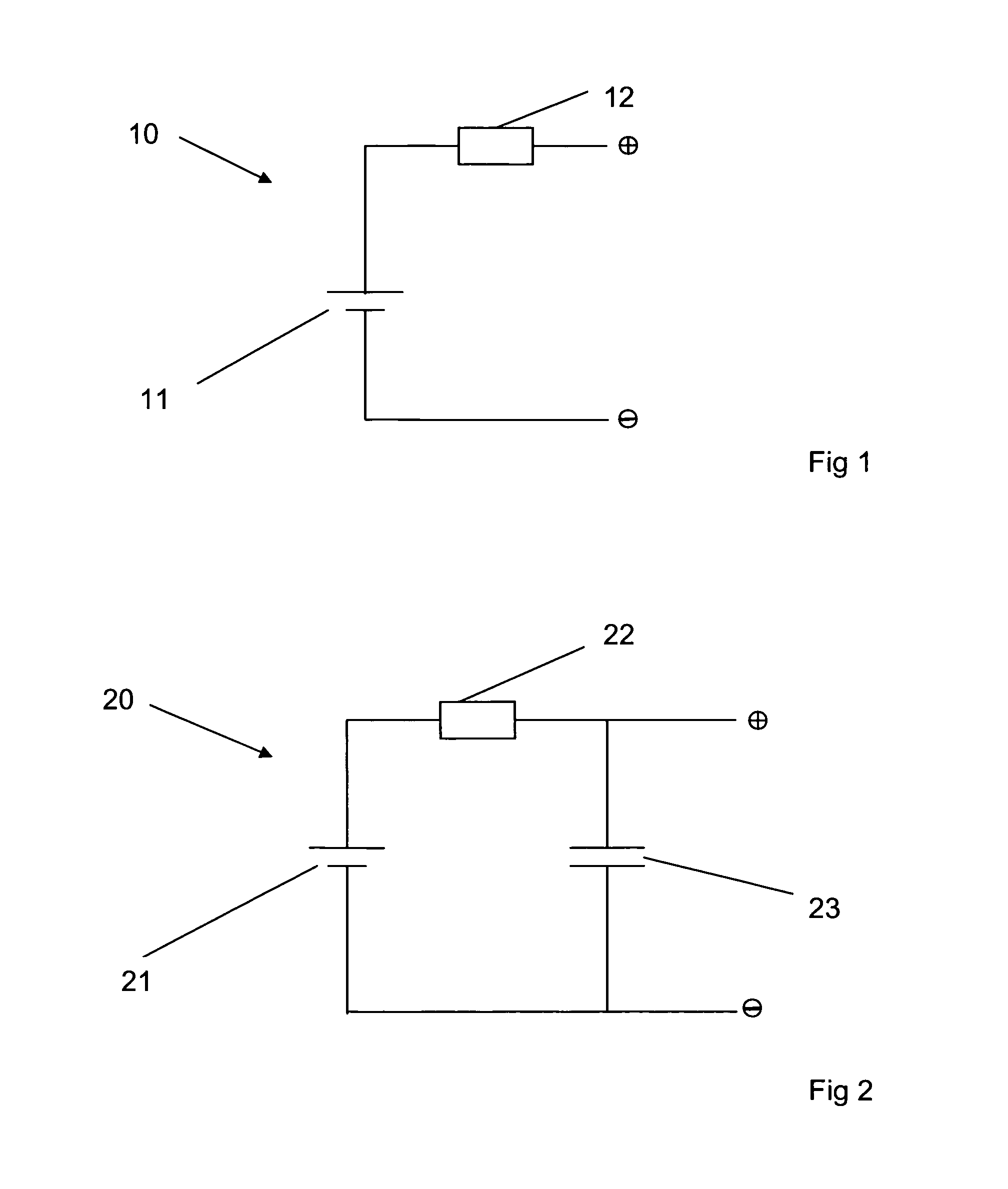Power supply
a power supply and battery technology, applied in the field of power supply, can solve the problems of battery capacity loss, energy consumption of passivation layer, and lithium battery type not being able to function as energy storage devices, and achieve the effect of reducing the need for maintenance and/or intervention
- Summary
- Abstract
- Description
- Claims
- Application Information
AI Technical Summary
Benefits of technology
Problems solved by technology
Method used
Image
Examples
Embodiment Construction
[0034]FIG. 1 illustrates an example of a power supply according to the present invention. The power supply 10 comprises a primary cell 11, which is a conventional battery of the type having an anode, a cathode current collector and an electrolyte. The primary cell 11 is further of the type which comprises a passivation layer on a surface of the anode, formed as a result of a chemical reaction between the anode and the electrolyte. In the example shown, the primary cell is a 3.6 V lithium thionyl chloride battery. Such batteries are particularly suitable for reliably providing power, preferably continuous power (particularly at low current levels), to a device for a long duration. Such batteries also have a long shelf life, due to the passivation layer, which layer largely prevents self discharge of the battery.
[0035]Although lithium batteries are often designated as long-life batteries, the inventors have found that when connected to a device such as e.g. a machine condition monitor...
PUM
 Login to View More
Login to View More Abstract
Description
Claims
Application Information
 Login to View More
Login to View More - R&D
- Intellectual Property
- Life Sciences
- Materials
- Tech Scout
- Unparalleled Data Quality
- Higher Quality Content
- 60% Fewer Hallucinations
Browse by: Latest US Patents, China's latest patents, Technical Efficacy Thesaurus, Application Domain, Technology Topic, Popular Technical Reports.
© 2025 PatSnap. All rights reserved.Legal|Privacy policy|Modern Slavery Act Transparency Statement|Sitemap|About US| Contact US: help@patsnap.com


